Foot Forward: Reshaping the Culture of Running and Consumption
Nigel Keen's thesis, Foot Forward: A Circular Approach for the Future of Running, centers around the issue of running shoe consumption and its climate impact. It aims to slow the rate of consumption by introducing repairability as an option for runners. Material innovations and technological advancements in 3D printing allow localized production of repairable and customized parts for running shoes. This creates a unique opportunity to fine-tune the running shoe to the individual for a better fit and improved performance.
Globally, over 22 billion pairs of shoes are thrown away yearly, and the amount of emissions produced by the footwear industry is 1.4% of ALL greenhouse gas emissions. To put this into perspective, the entire aviation industry accounts for 2% of the global GHG emissions.
Globally, over 22 billion pairs of shoes are thrown away yearly, and the amount of emissions produced by the footwear industry is 1.4% of ALL greenhouse gas emissions. To put this into perspective, the entire aviation industry accounts for 2% of the global GHG emissions. Through the lens of health awareness, materials, and repair, Nigel's thesis explores interventions to improve the health of runners, consumer behaviors, and the environment. These interventions rely on the practices of service design, physical product design, UX/UI design, and experience design.
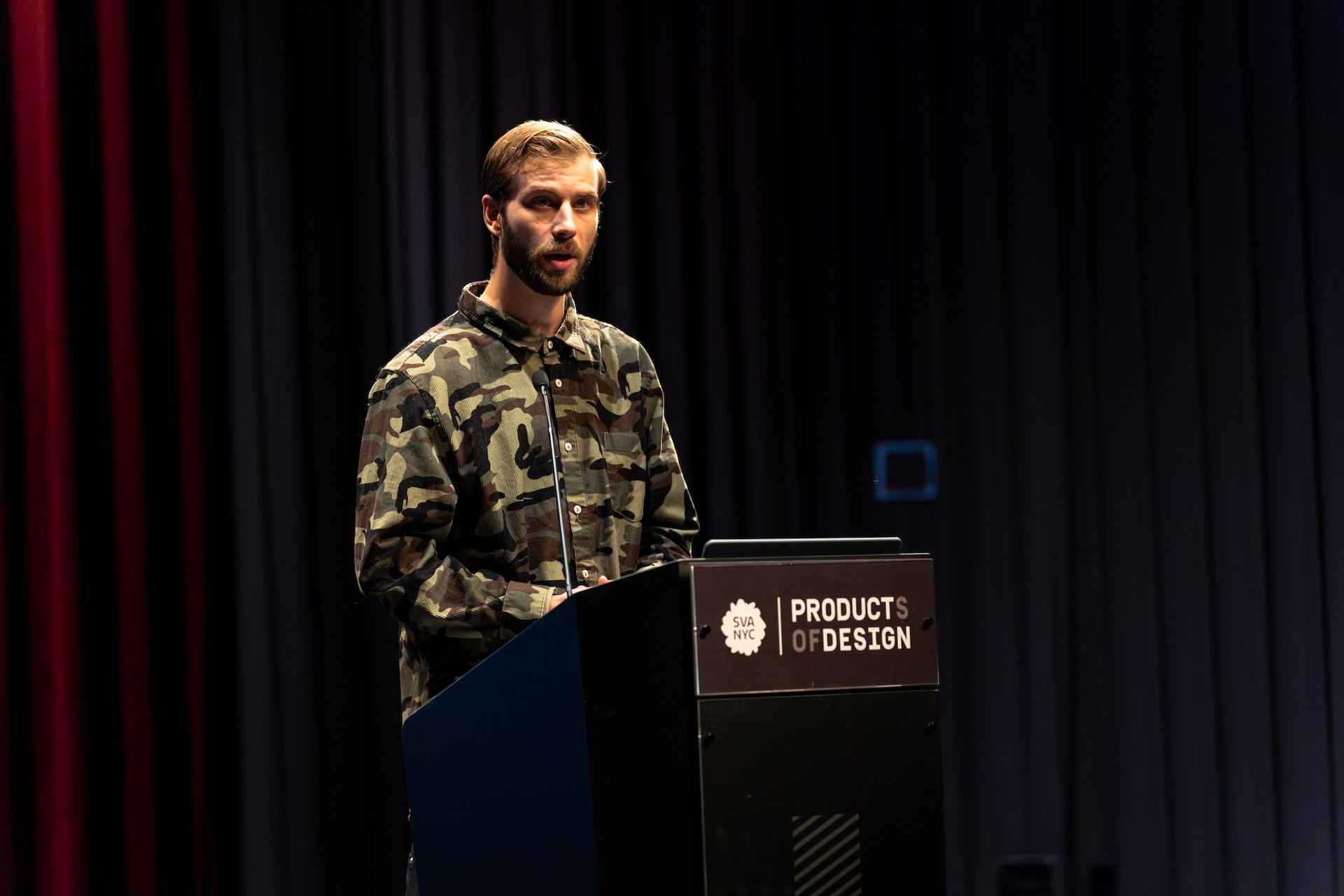
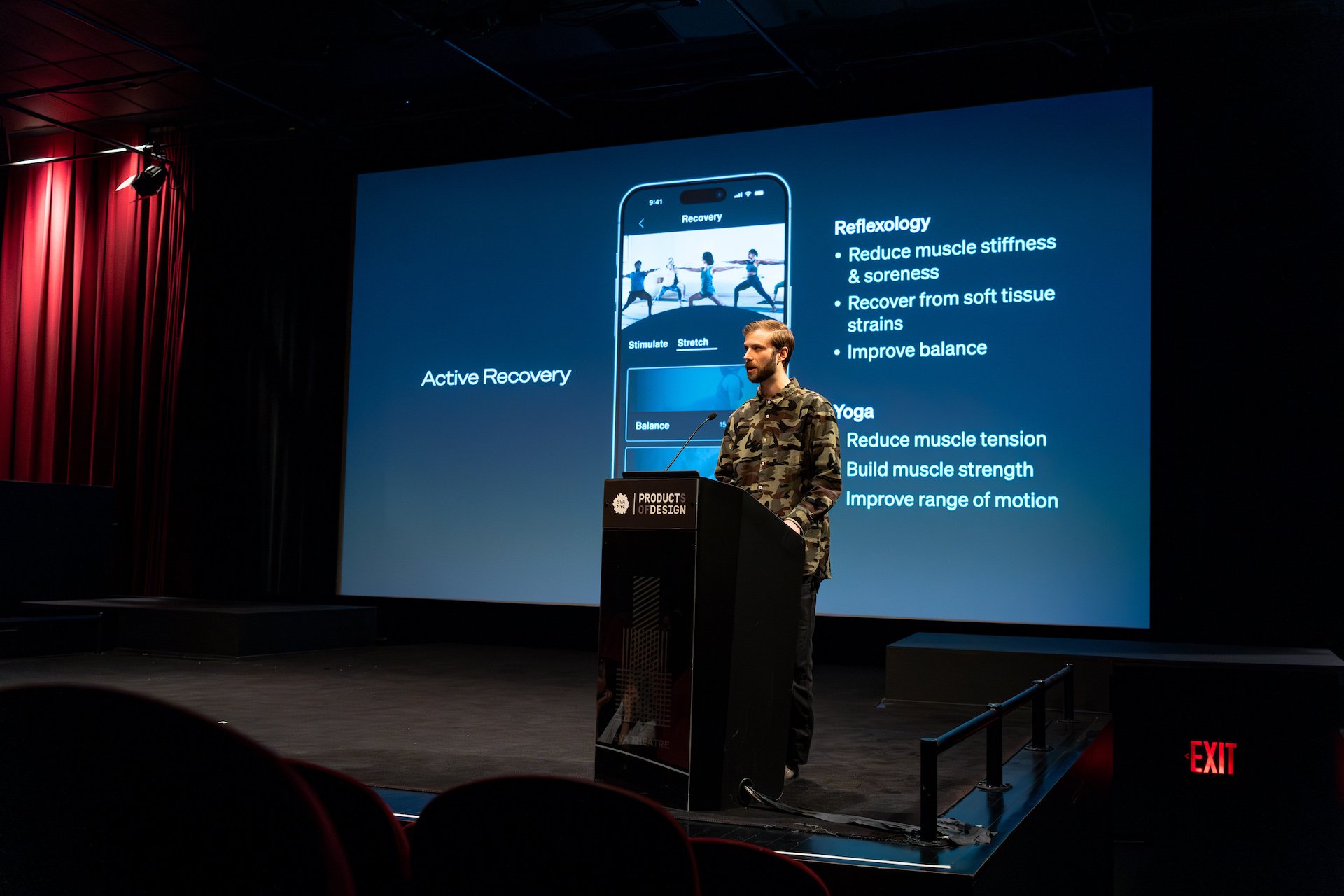
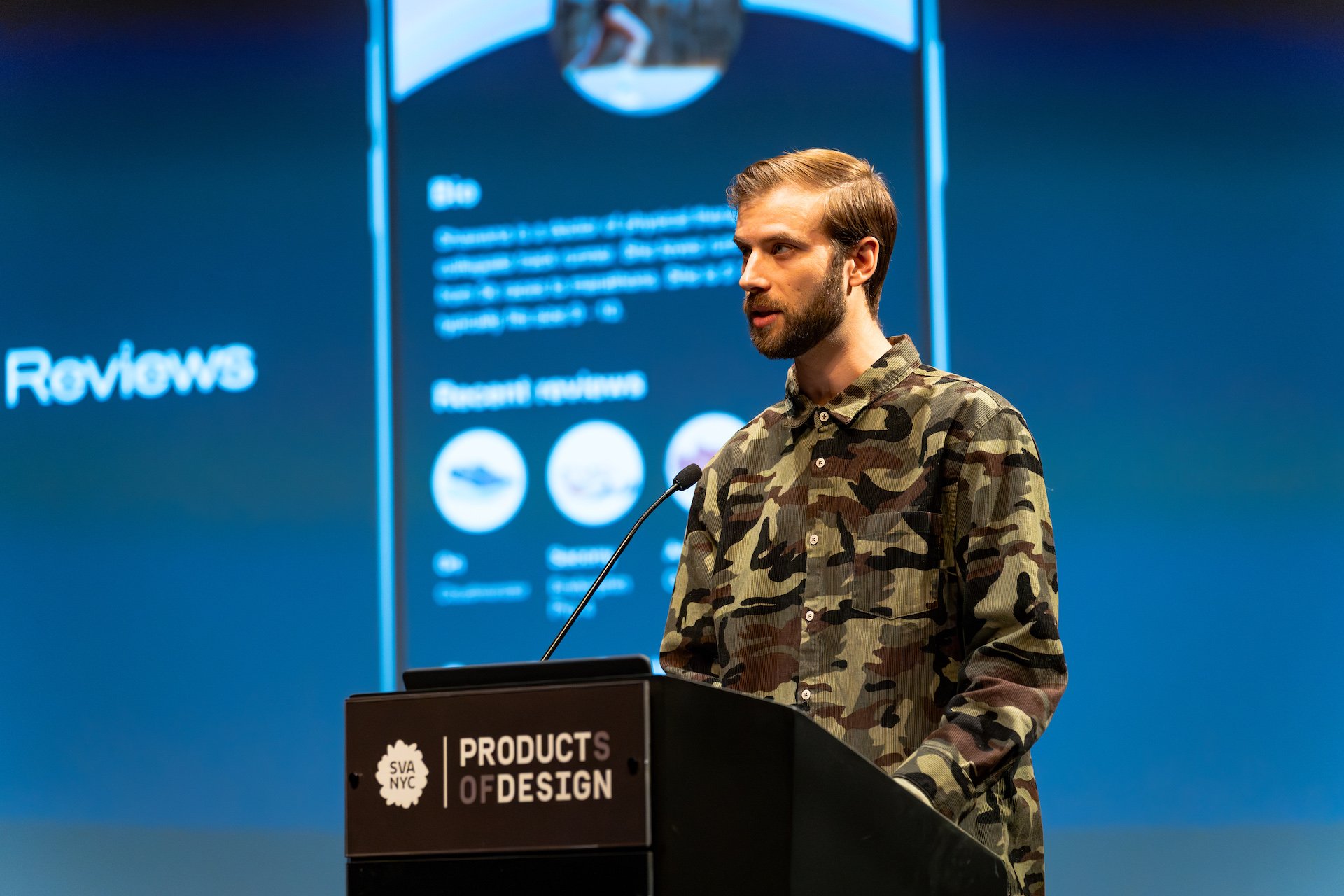
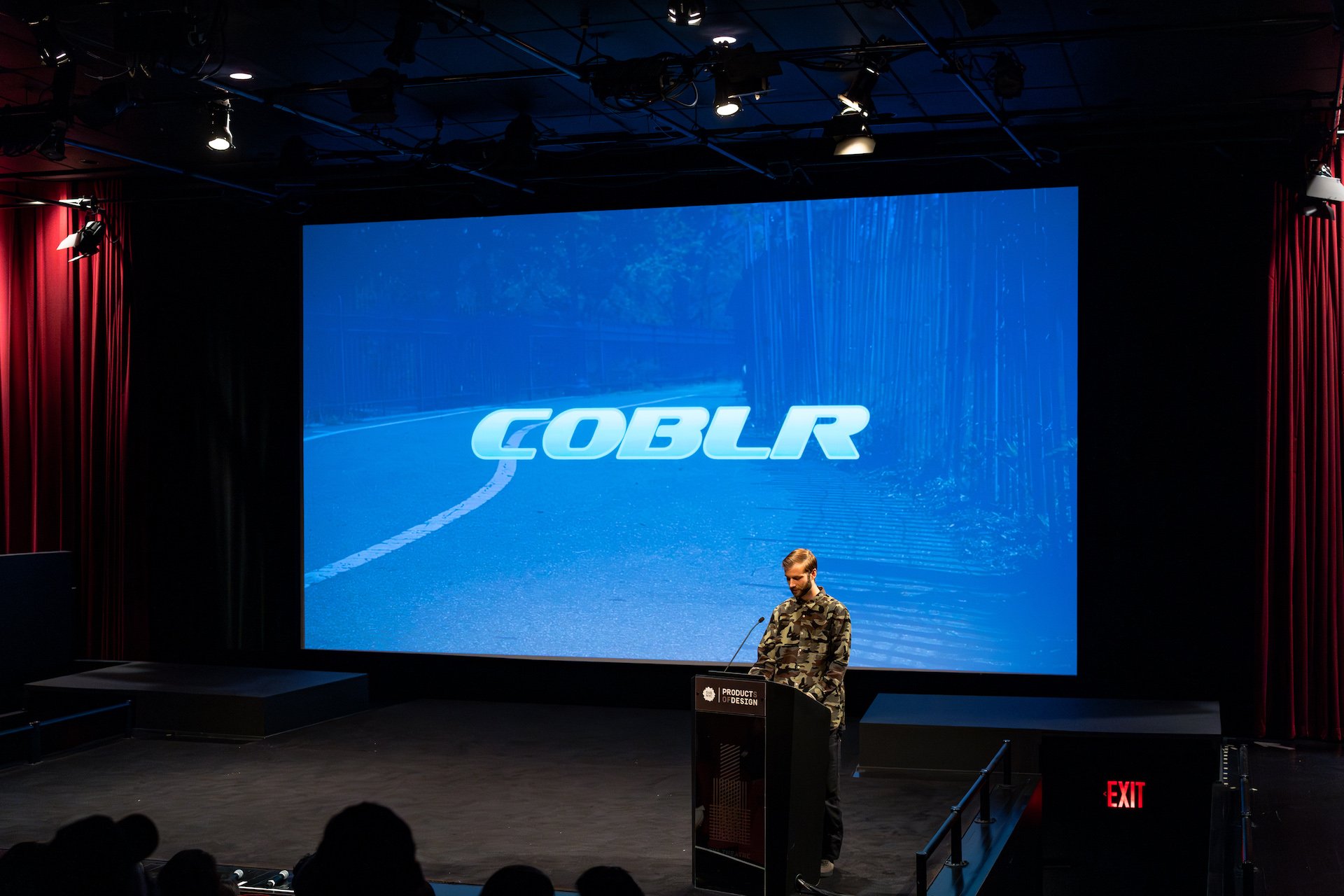
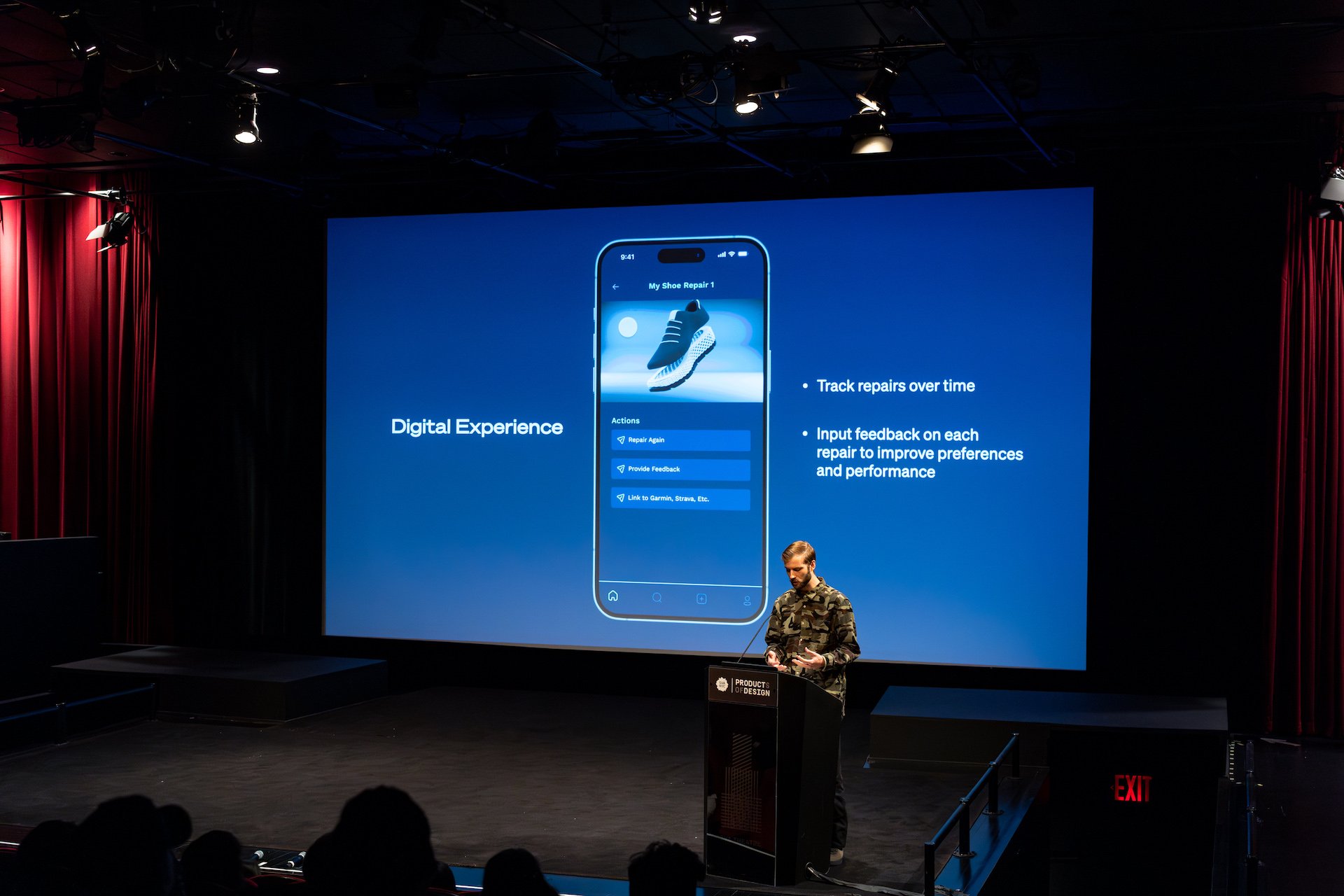

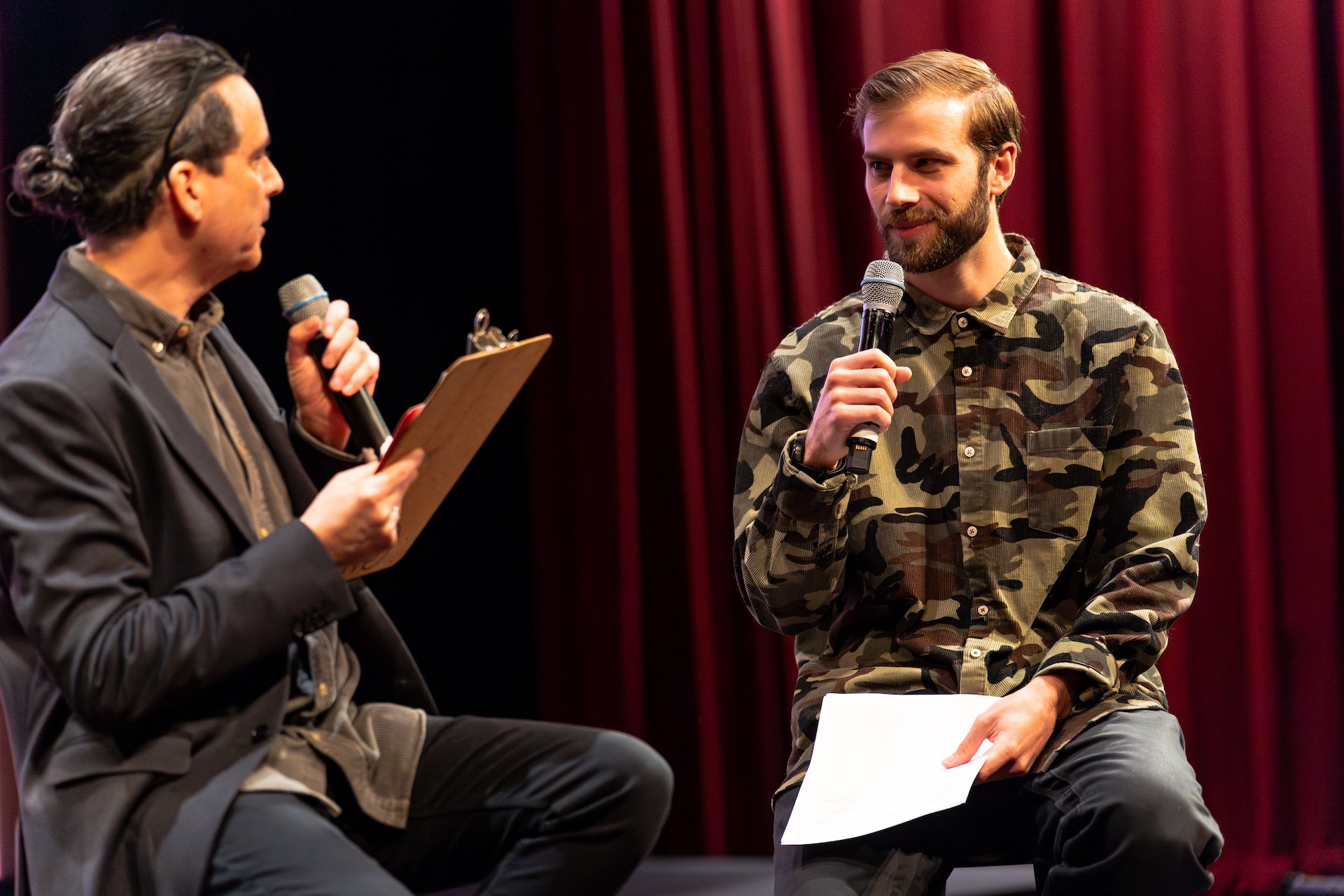
COBL3R: a brick & mortar repair shop + app
COBLR is a repair shop for runners who want to repair their worn-out running shoes instead of throwing them away. Why? Because they love the fit of their current pair and want to save time, energy, and money to find a new pair that works like their current one. Not only that, but this allows them to improve their fit by tailoring the soles to their unique shape and needs, saving the old shoe from ending up in a landfill. Nigel shared that through his research every single runner he talked to had a version of this story: “I loved this shoe by XYZ company, but when I wore through it and went to buy the snext model of the same line, it wasn’t really the same. I wish I could buy the old model.”
An additional component of this service is the sustainability of performance footwear. Because runners wear through their shoes at higher rates than casual footwear, there is a greater rate of consumption for these products. By offering the option to repair, consumption rates can be slowed by half or more, which means fewer shoes in landfills and less energy consumption and emissions from production. 3D printing also presents a unique opportunity to produce parts locally, reducing transportation costs and emissions and allowing for easier logistics in the recycling and return process when the shoe comes back for additional repairs.
From a service perspective, the business promotes circularity by prompting users to return for new repairs. Once a runner wears out their shoes, they will come to COBLR, where we will consult on what type of repairs are needed. Then, they would have their feet scanned and their running stride analyzed to provide data that would influence the new midsole design. Once the design is complete, the new midsole would be printed. The existing upper is then rebuilt with a new midsole and outsole.
This process can be repeated until the upper can no longer be repaired and maintain its structure and support for the runner. And because this creates a behavior of returning old pairs to the store, we can recycle old parts that typically get thrown away 95% of the time.
COBL3R in the app form is a mobile version of the store experience that allows users to track their runs and determine when their shoes fail. It also allows for further iteration of their sole designs by creating a library of shoes that have been repaired and syncing with fitness tracking apps
REST DAY: An active recovery and mindfulness experience for distance runners
Rest day is an experience designed for distance runners to practice mindfulness and reflexology as a way to restore their bodies from the stress of running. It also allows runners to discover better-fitting footwear through shoe reviews. By providing reviews based on shoe size, shape, and pace, runners can improve the overall experience in a shoe and reduce the risk of injury by acquiring simple and accessible information.
These techniques have been practiced for thousands of years, but only recently have they been studied by Western science to produce quantifiable evidence of their results. Through Nigel's literature studies of running footwear and its effects on the body, he found that long periods of standing or walking in shoes that improperly fit the individual can cause a misalignment of an individual's bone structure. Additionally, it causes a disconnection to the external environment, which negatively affects mental health, decreases mobility and range of motion in the body, and decreases blood flow in the feet, which has an overall effect on cardiovascular health. Humans are also very adaptable, which is why an individual can develop pathologies that lead to injury over time. Without the ability to self-diagnose, it can be hard to uncover that some of the recurring injuries may be caused by the footwear an individual wears.
This experience is designed for distance runners of any level. Because these practices can be generally applied to any person and require consistent practice to remain effective, the information and techniques can be used in any athletic endeavor or general wellness routine. However, the language of the content and the main focus of these practices are centered around improving one's ability to handle the stresses of running long distances and fostering a greater connection with the activity of distance running. Although the goal is not to improve speed or capacity to run longer distances, it may be a side effect of becoming more comfortable in an individual's equipment or resulting in an improved mental state when performing.
To learn more about Nigel Keen’s work, take a look at his projects in more detail at nigelkeen.com.




















